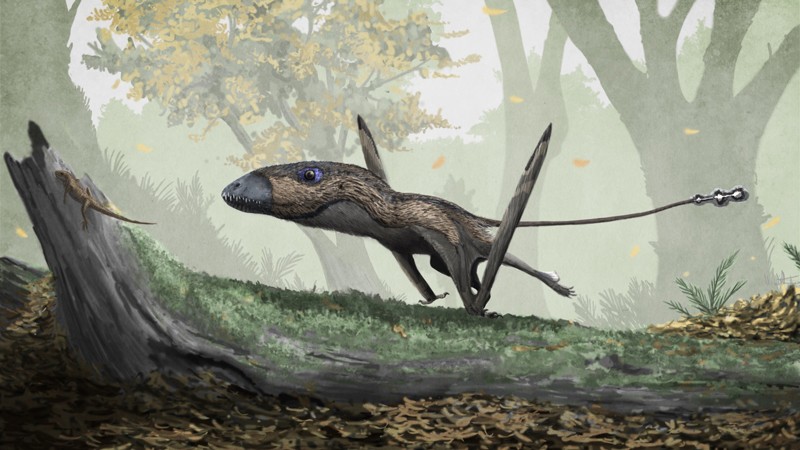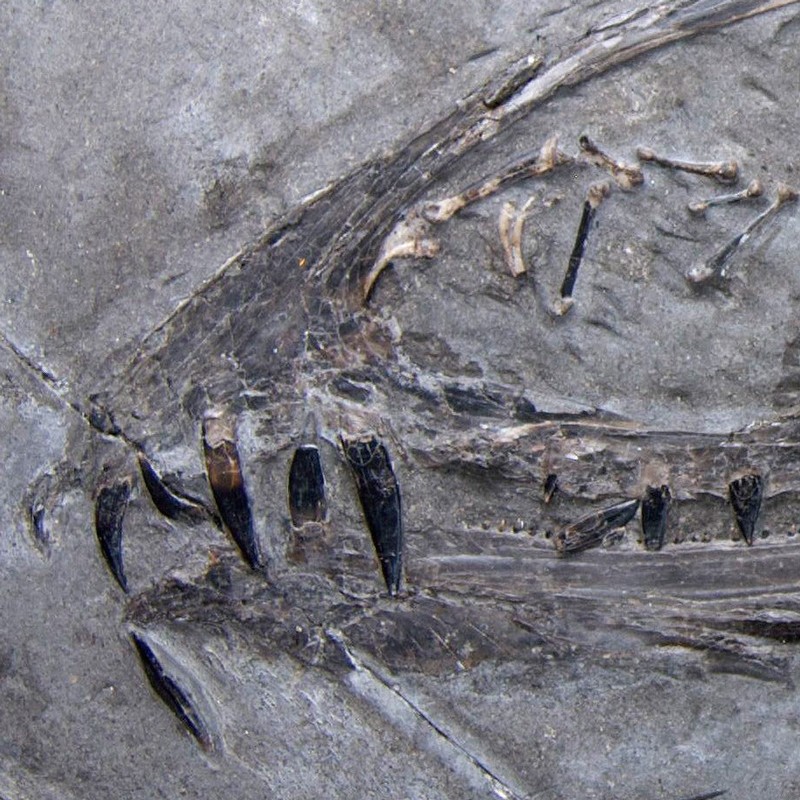Tooth scratches reveal new clues to pterosaur diets
Since they first uncovered pterosaur fossils in the eighteenth century, researchers have made assumptions about their eating habits, mostly on the basis of indirect clues such as the shapes of their teeth and the environments they lived in. But Jordan Bestwick, a palaeontologist at the University of Leicester, UK, and his colleagues sought more direct evidence: they performed the first examination of fossilized pterosaur teeth for tiny abrasions caused by food. Microscopic scratches and chips create characteristic surface textures that vary according to an animal’s diet, says Bestwick.
The preliminary findings are offering new evidence on the feeding habits of some species, and confirm theories about the diets of others. The results, which will form part of Bestwick’s PhD thesis, were presented at the Palaeontological Association annual meeting in London on 18 December.
One surprise in the analysis raised questions about the pterosaur Dimorphodon macronyx, which researchers assumed had hunted fish. The wear and tear on the reptile’s teeth now suggests it actually feasted on insects and land vertebrates.
Dental discoveries
Although pterosaurs existed for 150 million years, complete fossils are relatively rare and gut contents have been recovered from just four species. That means that most hypotheses about species’ diets have been “little more than speculation based on scant evidence”, says Bestwick.
He and his colleagues have so far examined 11 pterosaur species, looking at tooth specimens held at institutions such as the Natural History Museum in London and the Museum for Natural History in Berlin.
They used infinite-focus microscopes to create 3D images of tooth wear. They then used statistical methods to look at wear patterns in pterosaurs alongside the teeth of living species of bats, lizards and crocodilians that are known to eat insects or fish and other vertebrates. “We use that as our proxy data set to project the microwear of extinct organisms,” says Bestwick.
Stephen Brusatte, a palaeontologist at the University of Edinburgh, UK, says the study is one of the first attempts to use a rigorous statistical method to determine what these flying reptiles ate. “This is a great example of how a combination of cutting-edge techniques and careful comparisons to modern species can help us understand how long-extinct animals behaved,” says Brusatte.
Steven Vidovic, a vertebrate palaeontologist at the University of Portsmouth, UK, says complete fossils of pterosaurs are so rare because their light, hollow bones were relatively fragile and unlikely to fossilize. The lack of direct evidence of their diets has often led to assumptions about what they ate based on their environment, he says. For instance, pterosaur remains are often found in coastal environments, which led researchers to assume that many species ate fish, he says.
Changing views
Dimorphodon was previously believed to be a piscivore because people compared the shape of its head to those of modern puffins, which do eat fish, says Bestwick. Only in the past decade have researchers modelled its flight capabilities, with some concluding that it was a relatively poor flyer that couldn’t have effectively hunted fish, he says. Patterns of wear on the teeth of the four Dimorphodon macronyx fossils he has examined so far fit with his predictions for wear patterns produced by eating the insects and land vertebrates that lived alongside it early in the Jurassic period, around 190 million years ago.
More recent studies of pterosaur anatomy have also suggested that some species stalked their prey on land and ate insects, says Vidovic. “While there is good reason to think those lifestyles are likely, there was no way of independently testing the hypotheses.”
Vidovic says the latest analysis will allow palaeontologists to test theories on pterosaurs’ diets. “This new method presents a real opportunity to observe the hardness and abrasiveness of the food pterosaurs were consuming, and test hypotheses of ecology,” he says.
doi: 10.1038/d41586-018-00080-y


Nenhum comentário:
Postar um comentário
Observação: somente um membro deste blog pode postar um comentário.